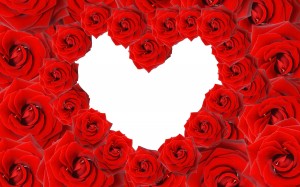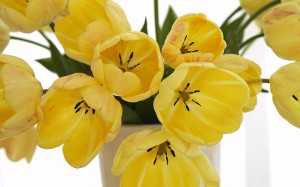Valentine’s Day is right around the corner and for every box of chocolate or card exchanged, there will be an insurmountable number of roses and other floral bouquets gifted to loved ones in celebration of this day of love. It is nearly impossible to attribute the origin of the tradition of gifting flowers to any one culture or time period. It seems that the idea of giving meaning to flowers and gifting them to those we hold in esteem has been a collective part of the human unconscious since the beginning of time.
Much of the floral symbolism that we know today within Western culture can be traced back to the 18th century. This trend was made popular in part by the Englishwoman Mary Wortley Montagu. Inspired by the significance of tulips in the court of Constantinople, she went on to write the first dictionary for the symbolic definition of flowers. Thus the language of flowers was born, attracting many writers, artists and poets to the new visual shorthand for communicating ideas through flower arranging.
Much of the floral symbolism that we know today within Western culture can be traced back to the 18th century.
Although floral symbolism may vary widely depending on the dictionary or compendium used to translate the symbolic meaning of flowers, in Western culture there are many flowers that hold a universal meaning. You may already be familiar with the notion that red roses symbolize love, whereas a gift of yellow roses symbolizes friendship. Likewise, you may also be no stranger to the concept that pink carnations and cattleya orchids are both symbols of maternal love and mature charm, which is why they are often given as gifts on Mother’s Day.
Inevitably, there is no lack of floral symbolism dedicated to the flowers that we gift to bereaved friends and family or loved ones that we have lost. It is not uncommon at a grave-site to see flowers like lilies, which can symbolize the restored innocence of the soul, or chrysanthemums that express lamentation and grief.
All throughout history, flowers have had a place throughout the funeral process for many cultures. In Victorian times, during the height of popularity for floriography, oftentimes flowers were used to adorn the bodies of the recently deceased, as it was tradition to lay out the loved one in the living room for many days at a time. In this case, heavily aromatic flowers were used to mask any unwelcome smells and to pay homage to those who had passed away.
It is not uncommon at a grave-site to see flowers like lilies, which can symbolize the restored innocence of the soul, or chrysanthemums that express feelings of lamentation and grief.
Later on, the addition of Flower Ladies became popular in mid-western funeral practices. Here women would take their place in a funeral procession with the pall-bearers and escort the casket with beautiful bouquets in hand. Although this role has been phased out of modern Western funeral ceremonies, the practice of gifting and displaying flowers has remained.
It seems that no matter the occasion, the gift of flowers is an excellent way of showing someone you care. If you are planning to carry on the tradition of giving flowers this Valentine’s Day, why not use the language of flowers and craft your own unique bouquet to share a personalized message with the one you love?
Related SevenPonds Articles:
- Coping with Grief on Valentine’s Day
- More Than a Hallmark Holiday
- Speaking of Romantic Valentine’s Day Stories–it Starts With Sex and Then Love Kicks in

 Love in the Language of Flowers
Love in the Language of Flowers




 John Mulaney’s “Funeral Planning” on Netflix: No Real Plan
John Mulaney’s “Funeral Planning” on Netflix: No Real Plan

 Composting Bodies Is Now Legal in a Dozen States
Composting Bodies Is Now Legal in a Dozen States














